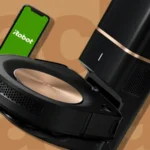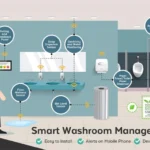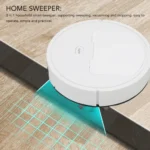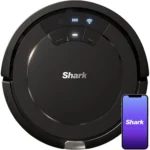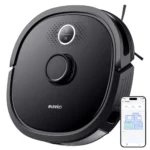Picture this: you’re lounging on your couch, book in hand and tea by your side, enjoying some much-needed downtime. Suddenly, your eyes are drawn to the dust bunnies hiding in the corners of the room, and you’re jolted out of your relaxation. Cleaning is the last thing you want to do, but now you can breathe a little easier, knowing that a smart vacuum cleaner with Wi-Fi connectivity can take care of it for you.
In this article, we’ll explore the benefits of smart vacuums with Wi-Fi connectivity compared to traditional vacuums. We’ll dive into their design, features, and performance, and take a closer look at how they stack up in terms of connectivity and convenience. We’ll also examine maintenance and durability factors, as well as the price and value of each option. So, sit back, relax, and let’s get started.
Design and Features
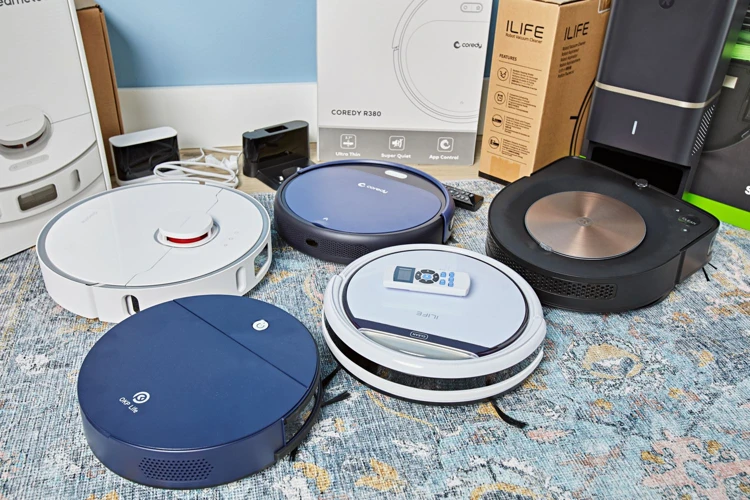
As we dive deeper into the world of vacuum cleaners, it’s essential to look at the unique designs and innovative features that set smart vacuum cleaners with Wi-Fi connectivity apart from traditional vacuum cleaners. Smart vacuums have come a long way since their inception, providing users with ease of use, convenience, and efficiency. In this section, we’ll explore the design and features that make smart vacuums stand out and the benefits they offer over traditional vacuum cleaners. Let’s take a closer look! If you want to learn about the benefits of smart vacuum cleaners with Wi-Fi connectivity, check out our article about whether smart vacuums with Wi-Fi are worth it.
Design
When it comes to the design of smart vacuum cleaners with Wi-Fi connectivity, they are quite different from traditional vacuum cleaners. Firstly, smart vacuums are sleeker and more compact, allowing them to easily maneuver around furniture, under beds and other tight spaces. They are also much lighter in weight than traditional vacuums, making them easier to carry up and down stairs.
In addition to their compact size, smart vacuums often have a more modern and minimalist design. Some models have a circular shape, while others might be more rectangular. They typically come in neutral colors, like black or white, making them suitable for any home decor.
Smart vacuums with Wi-Fi connectivity also feature LED displays that show their status and other important information. This is a major improvement over traditional vacuums that typically only have a few basic controls and no display.
One standout design feature of smart vacuums with Wi-Fi connectivity is their charging base. This is where the vacuum docks when it needs to recharge. The charging base is often sleek and well-designed, making it a nice addition to any home.
The design of smart vacuums with Wi-Fi connectivity is sleek, modern, and functional. Their compact size, neutral colors, and LED displays make them a fashionable choice for any home. If you’re in the market for a new vacuum, consider upgrading to a smart vacuum with Wi-Fi connectivity for both its design and features.
Internal link: Smart vacuum cleaners with Wi-Fi connectivity
Features
When it comes to smart vacuum cleaners with Wi-Fi connectivity, their features are what sets them apart from traditional vacuum cleaners. These vacuums are designed to make cleaning an effortless experience, thanks to their impressive technology.
Here are some of the top features of smart vacuums with Wi-Fi connectivity:
| Features | Description |
|---|---|
| Mapping Technology | This technology allows the vacuum to map out the layout of your home for efficient cleaning. The robot uses built-in sensors, cameras, and laser technology to create a detailed map of your home’s floor plan, making sure it doesn’t miss a spot. |
| Scheduling | This feature allows you to schedule your vacuum to run at specific times, even when you’re not at home. You can set the vacuum to clean during the day or at night, depending on your preferences. Some vacuums even have separate scheduling for individual rooms. |
| Cleaning Modes | Smart vacuums typically have different cleaning modes, such as spot cleaning, edge cleaning, and auto-cleaning. These modes ensure that the vacuum cleans every nook and cranny of your home, from carpets to hardwood floors. |
| Automatic Charging | No need to worry about your vacuum running out of battery mid-cleaning. With this feature, the vacuum automatically returns to its charging dock when the battery is low, ensuring that it’s always ready for the next cleaning session. |
| Smart Navigation | These vacuums use advanced navigation technology to avoid obstacles and detect stairs, making sure they don’t damage your home or themselves. They can also detect areas that need more cleaning and adjust their cleaning modes accordingly. |
| HEPA Filtration | A key feature of smart vacuums is their high-efficiency particulate air (HEPA) filtration system. They can trap even the smallest of particles, including dust, allergens, and pet dander, ensuring that the air in your home is clean and healthy. |
These features work together to create a smart vacuum that’s efficient and effective, making cleaning your home a breeze. To learn more about the top smart vacuums with Wi-Fi connectivity available on the market, check out our top picks and find out if a smart vacuum with Wi-Fi is worth it in our latest article.
Performance
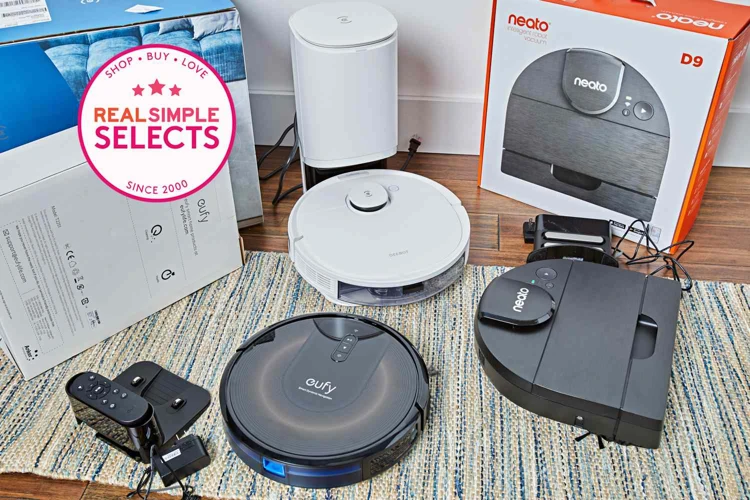
When it comes to choosing a vacuum cleaner, many factors need to be considered to ensure that it is capable of meeting your cleaning needs. One of the most important aspects to take into account is the performance of the cleaner. This includes its cleaning capabilities, noise level, and battery life. Understanding how these factors compare can help you choose the right vacuum cleaner for your home. So let’s dive into the performance comparison of smart vacuum cleaners with Wi-Fi connectivity to traditional vacuum cleaners, and discover whether or not the smart vacuum with Wi-Fi connectivity is worth it.
Cleaning Capabilities
When it comes to cleaning capabilities, there is a world of difference between smart vacuum cleaners with Wi-Fi connectivity and traditional vacuum cleaners. Smart vacuums, with their advanced technology and precise programming, have a definite edge in this regard. Let’s take a closer look at the cleaning capabilities of each.
Smart Vacuum Cleaners:
Smart vacuum cleaners use advanced sensors and mapping technology to navigate their way around your house, identifying areas that need cleaning and avoiding obstacles. They use powerful suction, brushes, and other cleaning tools to effectively remove dust, dirt, and debris from your floors and carpets.
Another advantage of smart vacuums is that they can be programmed to clean according to your specific preferences. You can schedule them to clean at specific times, or even set them up to clean on a daily basis. This means that you can come home to a clean house every day without having to lift a finger.
In addition to this, many smart vacuums also come equipped with features like edge detection, which allows them to clean along walls and other edges more effectively. They may also have different modes for cleaning different types of surfaces, such as hard floors or carpets, and some can even be used for mopping.
Traditional Vacuum Cleaners:
Traditional vacuum cleaners, on the other hand, rely on manual operation to clean your home. While they may have strong suction power, they lack the precision and advanced technology of smart vacuums.
Depending on the model, traditional vacuums may come with a range of cleaning tools, such as crevice tools and dusting brushes, which can be used to clean different types of surfaces. However, they are limited in their ability to navigate tight spaces and avoid obstacles.
Comparison:
When it comes to cleaning capabilities, smart vacuum cleaners with Wi-Fi connectivity have a clear advantage over traditional vacuum cleaners. They are more precise, efficient, and effective, with a wide range of customizable features to suit your cleaning needs. If you’re looking for a vacuum cleaner that will save you time and effort, a smart vacuum is definitely the way to go.
Here’s a comparison table:
| Smart Vacuum Cleaners | Traditional Vacuum Cleaners | |
|---|---|---|
| Navigation | Advanced sensors and mapping technology | Manual operation |
| Cleaning Tools | Suction, brushes, mopping, edge detection, different modes | Crevice tools, dusting brushes |
| Customization | Customizable features to suit your cleaning needs | Limited customization options |
| Efficiency | More precise, efficient, and effective | Less precise, less efficient, and less effective |
Noise Level
When it comes to choosing a vacuum cleaner, noise level is one of the most important factors to consider. Traditional vacuum cleaners tend to be quite loud, which can be disruptive to the household, especially if you have pets or children who are easily startled by loud noises. However, smart vacuum cleaners with Wi-Fi connectivity tend to be quieter, making them a more sensible choice for busy homes.
To illustrate this point, it’s worth comparing the noise levels of traditional vacuum cleaners to those of smart-vacuum cleaners. The table below highlights the differences in noise levels between the two types of vacuum cleaners.
| Vacuum cleaner type | Noise level (decibels) |
|---|---|
| Traditional vacuum cleaner | 70-80 dB |
| Smart vacuum cleaner with Wi-Fi connectivity | 50-65 dB |
As you can see from the table, smart vacuum cleaners with Wi-Fi connectivity tend to be quieter than traditional vacuum cleaners. This is because they are designed with advanced technology that helps to reduce noise levels. With noise levels ranging from 50-65 decibels, smart vacuum cleaners with Wi-Fi connectivity are ideal for use in busy homes, as they won’t disturb your daily activities.
When it comes to buying a vacuum cleaner, noise level is an important factor to consider. Smart vacuum cleaners with Wi-Fi connectivity tend to be quieter than traditional vacuum cleaners, making them a great choice for busy homes. With a noise level range of 50-65 decibels, these vacuum cleaners are perfect for cleaning while children or pets are present, ensuring a peaceful and uninterrupted cleaning experience.
Battery Life
When it comes to battery life, smart vacuum cleaners with Wi-Fi connectivity have both advantages and disadvantages compared to traditional vacuum cleaners.
On one hand, smart vacuum cleaners usually have rechargeable lithium-ion batteries which can provide strong suction power for longer periods of time. Some models can run up to 120 minutes on a single charge, making them ideal for large homes. Many smart vacuum cleaners utilize “smart charging” technology which allows the device to automatically return to its charging dock when it’s low on battery. This means that you won’t have to worry about your vacuum cleaner dying in the middle of a cleaning session.
On the other hand, traditional vacuum cleaners usually have power cords, meaning they don’t rely on battery power. This makes them ideal for longer cleaning sessions, as you won’t have to pause midway and wait for the battery to recharge. However, traditional vacuum cleaners can be limiting in terms of mobility, as they need to be near an electrical outlet at all times.
Here is a comparison table of the battery life of some popular smart vacuum cleaners with Wi-Fi connectivity:
| Brand | Battery Life |
|---|---|
| iRobot Roomba i7+ | Up to 120 minutes |
| Eufy RoboVac 11S MAX | Up to 100 minutes |
| Shark IQ Robot Self-Empty XL | Up to 90 minutes |
| Ecovacs Deebot N79S | Up to 110 minutes |
As you can see, there are subtle differences in battery life among different brands and models of smart vacuum cleaners. It’s important to consider your cleaning needs and home size when choosing a smart vacuum cleaner with the right battery life for you.
Connectivity and Convenience
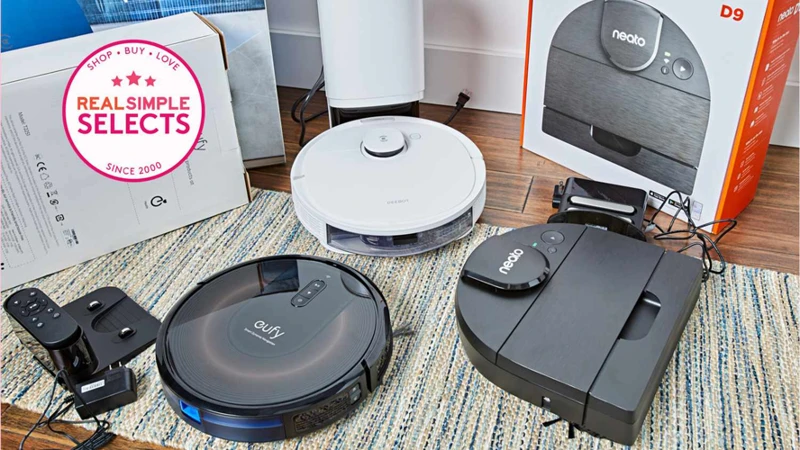
As we venture deeper into the technological world, it’s hard to ignore the convenience offered by Wi-Fi connectivity. Smart vacuum cleaners with Wi-Fi capabilities have taken over the market, and have become increasingly popular in recent times. The ability to control your smart vacuum cleaner with a mobile app or voice commands is a technological breakthrough that traditional vacuum cleaners can’t offer. In this section, we’ll explore the connectivity and convenience features that set smart vacuum cleaners apart from their traditional counterparts, and how they can make our lives easier.
Wi-Fi Connectivity
One of the standout features of smart vacuum cleaners is their Wi-Fi connectivity, which allows for a range of benefits over traditional vacuum cleaners. Let’s take a closer look at the advantages of Wi-Fi connectivity in smart vacuum cleaners.
Remote Control: With Wi-Fi connectivity, users can control their smart vacuum cleaners from anywhere, anytime. This makes it incredibly easy to start a cleaning cycle while at work or even on vacation, ensuring that one returns home to a clean house. The mobile apps that come with smart vacuum cleaners often have scheduling features that allow users to set when they want the vacuum to start cleaning, making it even more convenient.
Status Updates: Wi-Fi connectivity also ensures that users receive automatic updates on their device’s cleaning progress. This is particularly useful for larger homes or if the user has multiple floors, as they can easily monitor which areas the vacuum has cleaned and which areas it still needs to cover.
Integration with Smart Home Systems: Smart vacuum cleaners with Wi-Fi connectivity can be integrated with other smart home systems, such as Amazon Alexa, allowing for voice control. This means that users can simply give a voice command to start the cleaning process. Smart vacuum cleaners can be integrated with other smart home products, such as smart lighting or smart thermostats, for added convenience and control.
Data Collection and Analysis: Another advantage of Wi-Fi connectivity is the ability to collect data on cleaning patterns, frequency, and duration. This information can be used to optimize cleaning performance, ensuring that the device is cleaning efficiently and effectively. Many smart vacuum cleaners allow users to access this data through the mobile app, giving them insight into their cleaning habits.
Wi-Fi connectivity is a game-changer for vacuum cleaners. It offers remote control, status updates, smart home integration, and data collection, all of which make smart vacuum cleaners much more convenient and effective than traditional vacuum cleaners.
| Advantages of Wi-Fi Connectivity |
|---|
| Remote Control |
| Status Updates |
| Integration with Smart Home Systems |
| Data Collection and Analysis |
Mobile App Control
If you’re a tech-savvy person and love controlling everything through your smartphone, then you’ll be thrilled to know that most smart vacuum cleaners come with Mobile App Control. By using the associated app, you can control your vacuum cleaner from anywhere in your house, provided it’s connected to Wi-Fi.
The Benefits of Mobile App Control
With mobile app control, you don’t need to reach out to your vacuum cleaner physically if you’ve forgotten to clean a particular area or if it hasn’t cleaned your desired spot. Instead, you can just check the app on your phone to see where exactly the vacuum cleaner is, and then you can control it to clean the desired spot.
Additionally, mobile app control helps you to personalize your cleaning schedule. For example, if you have a busy schedule and don’t want the vacuum cleaner to interrupt your work, you can set up a schedule to vacuum while you’re away from your house, thereby reducing the effort you have to put in.
But that’s not all – some of the latest models of smart vacuum cleaners come with extra features for mobile app control. These features include creating virtual boundaries to avoid specific areas in your house, getting notifications when the vacuum cleaner gets stuck, receiving maintenance reminders, and more.
The Drawbacks of Mobile App Control
Despite the many benefits of mobile app control, some drawbacks come with it as well. For example, not everyone is comfortable with technology, and some people might find it challenging to set up the app or use it effectively.
Certain aspects of the app operate distinctively from the traditional vacuum cleaners. This means that users might need to learn and adapt to a new system, and in some cases, the app could be glitchy or unstable.
To summarize, the Mobile App Control feature is a great advantage for people who prefer convenience and love controlling everything through their smartphones. If you decide to go for a smart vacuum cleaner with Mobile App Control, make sure to choose a reliable model with good customer reviews.
Voice Control
Voice control is a convenient feature offered by some smart vacuums with Wi-Fi connectivity. With voice control, you can simply use your voice to instruct your vacuum to start, stop, or dock, making cleaning your home even easier. Let’s take a closer look at some popular smart vacuums and their voice control capabilities.
| Smart Vacuum | Voice Control Supported? | Voice Control Platforms |
|---|---|---|
| iRobot Roomba i7+ | Yes | Google Assistant and Amazon Alexa |
| Eufy RoboVac 30C | Yes | Google Assistant and Amazon Alexa |
| Shark IQ Robot Vacuum | Yes | Google Assistant and Amazon Alexa |
| Xiaomi Mi Robot Vacuum | Yes | Xiaomi AI Speaker or Mi Home app |
| Ecovacs Deebot N79S | Yes | Amazon Alexa |
| Hoover Rogue 970 | Yes | Amazon Alexa |
As you can see, many popular smart vacuums offer voice control support, with some supporting multiple platforms. Voice control can be especially convenient if you have your hands full or if you simply want to control your vacuum without having to use a mobile app.
It’s important to note, however, that voice control is dependent on Wi-Fi connectivity and the compatibility of your smart vacuum with your preferred voice control platform. If you already have a Google Assistant or Amazon Alexa device in your home, then you’re already well-positioned to add voice control to your smart vacuum experience. However, it’s important to research compatibility before making a purchase to ensure that you can take advantage of this convenient feature.
Maintenance and Durability
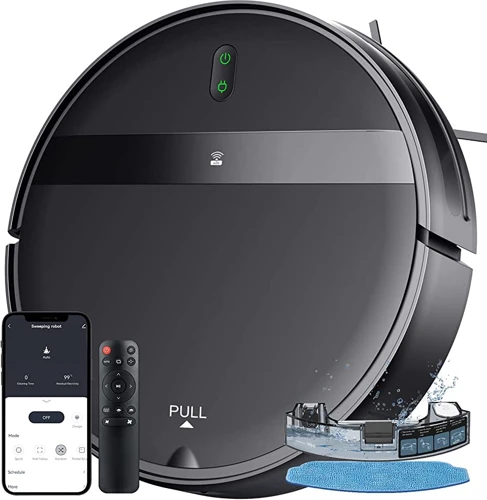
As a buyer, you want to ensure that your investment in a smart vacuum cleaner is worth it. One key consideration is the maintenance and durability of the device. A malfunctioning or broken vacuum cleaner is not only frustrating, but it can also be costly. It’s important to evaluate the maintenance requirements and overall durability of the smart vacuum cleaner before making a purchase. In this section, we will dive into the maintenance and durability aspects of smart vacuum cleaners and compare them to traditional models.
Maintenance
Proper maintenance is essential to keep your smart vacuum cleaner with Wi-Fi connectivity or traditional vacuum cleaner running smoothly and efficiently. Here’s a breakdown of the maintenance requirements and costs for each type:
| Smart Vacuum Cleaners with Wi-Fi Connectivity | Traditional Vacuum Cleaners | |
|---|---|---|
| Filter Replacement | $20 – $40 per year | $10 – $20 per year |
| Brush Replacement | $30 – $50 per year | $20 – $30 per year |
| Battery Replacement | $50 – $100 every 2-3 years | Not required |
| Cleaning Schedule | Easily programmable and customizable through mobile app | Manual adjustment required |
Smart vacuum cleaners with Wi-Fi connectivity typically require more maintenance than traditional vacuum cleaners. They generally have more features and advanced technology that may need upkeep, such as filter and brush replacements. However, they also come with the benefit of customizable cleaning schedules that can easily be adjusted through a mobile app, saving you time and energy.
On the other hand, traditional vacuum cleaners require less maintenance, with no battery replacement necessary. However, they do not have the advanced features and technology that smart vacuum cleaners with Wi-Fi connectivity offer, such as mobile app control and voice control capabilities.
Both types of vacuum cleaners require regular cleaning of the dustbin or bag to prevent clogging and maintain optimal suction power. It’s recommended to clean the dustbin or bag after each use and replace filters and brushes as needed to ensure top-notch cleaning capabilities.
Durability
When it comes to the durability of smart vacuum cleaners with Wi-Fi connectivity versus traditional vacuum cleaners, there are several factors to consider. Smart vacuums typically have more advanced technology and features, which can affect their long-term reliability.
One of the key factors in the durability of a vacuum is the quality of its construction materials. Smart vacuums tend to be built with higher-quality materials than traditional vacuums, which can make them more durable over time. For instance, the iRobot Roomba i7+ features a durable, scratch-resistant finish that helps it hold up to everyday wear and tear.
Another important factor is the reliability of the vacuum’s components. Smart vacuums often have more complex systems than traditional vacuums, which means there is a greater risk of component failure. However, manufacturers are aware of this and tend to use higher-quality components in smart vacuums to reduce this risk. The Neato Botvac D7 is a great example of a smart vacuum with a durable, high-quality motor that is designed to last for years.
To compare the durability of different vacuums, it can be helpful to look at their warranties. Smart vacuums like the Eufy Robovac 11S Max often come with longer warranties than traditional vacuums, which can be an indication of greater durability.
While there is some risk of component failure with smart vacuums due to their advanced technology, they generally tend to be more durable than traditional vacuums thanks to their high-quality construction materials and components. Taking good care of your vacuum through regular maintenance and cleaning can also help extend its lifespan.
Below is a table comparing the durability of some popular smart vacuum cleaners with Wi-Fi connectivity to traditional vacuum cleaners:
| Vacuum Model | Durability |
|---|---|
| iRobot Roomba i7+ | High |
| Neato Botvac D7 | Very High |
| Eufy Robovac 11S Max | High |
| Shark Navigator Lift-Away Deluxe | Medium |
| Bissell PowerEdge Pet Hardwood Floor Corded Vacuum | Low |
As you can see, the smart vacuums listed tend to have higher durability ratings than the traditional vacuums. However, it’s worth noting that this is just a general comparison and there may be models that buck the trend. When looking for a new vacuum cleaner, it’s always a good idea to read reviews and do research to find the model that best fits your needs and preferences.
Price and Value
When it comes to smart vacuum cleaners with Wi-Fi connectivity, you can expect to pay a premium price compared to traditional vacuum cleaners. However, the value of these advanced devices often justifies the extra expense.
Price
On average, a smart vacuum cleaner with Wi-Fi connectivity can cost anywhere from $200 to $800, depending on the brand, model, and features. For example, the popular Roomba i7+ robot vacuum with Wi-Fi connectivity and automatic dirt disposal comes with a high-end price tag of around $1,099. On the other hand, a non-smart traditional vacuum cleaner can be purchased for as little as $50.
Value
The value of a smart vacuum cleaner with Wi-Fi connectivity lies in its advanced features and convenience. These devices can be controlled from a mobile app or voice assistant, allowing you to start cleaning or adjust settings with ease. Wi-Fi connectivity also allows for remote access and control, so you can start a cleaning session even when you’re away from home.
Smart vacuum cleaners with Wi-Fi connectivity come with advanced sensors and technology, meaning they can navigate your home more efficiently and effectively. This results in better cleaning performance and less time spent vacuuming manually.
It’s also worth mentioning that many smart vacuum cleaners are designed to be low maintenance, which can save you time and money in the long run. Some models even come with self-cleaning technology and reusable filters, which means you won’t have to replace parts as often as you would with traditional vacuum cleaners.
Overall
Despite the higher price tag, the added value of a smart vacuum cleaner with Wi-Fi connectivity makes it a worthy investment for many homeowners looking to streamline their cleaning routine. The advanced features, convenience, and improved cleaning capabilities make it a smarter choice over traditional vacuum cleaners.
Conclusion
After comparing the smart vacuum cleaners with Wi-Fi connectivity to traditional vacuum cleaners, it’s apparent that the former is a superior choice by a significant margin. Although traditional vacuum cleaners have been around for a long time and are quite popular among consumers, they fall short of the benefits that smart vacuum cleaners bring to the table.
Smart vacuum cleaners boast impressive features that have revolutionized the cleaning industry. They offer great convenience, are easy to use, and saves time. You won’t have to waste precious time and energy pushing a heavy traditional vacuum around your home, as smart vacuums can be controlled from the comfort of your phone.
The Wi-Fi connectivity feature is the standout advantage of smart vacuums. With the ability to connect to the internet, you can control your vacuum from anywhere in the world using your phone. This feature has made it possible for homeowners to clean their homes while on the go. You can schedule cleanings, track progress and receive notifications right from your device.
Additionally, smart vacuums have impressive cleaning capabilities that are unmatched by traditional vacuums. With their powerful suction and advanced sensors, they can clean much more thoroughly than traditional vacuums. The noise level of smart vacuums is also commendable, as they operate at a quieter level compared to traditional vacuums.
While smart vacuums may be pricier than traditional vacuums, they offer great value for money in the long run. They provide impressive cleaning capabilities, Wi-Fi connectivity, and convenience that traditional vacuums cannot match.
In conclusion, if you are in the market for a new vacuum cleaner, investing in a smart vacuum with Wi-Fi connectivity is a wise choice. It provides superior cleaning capabilities, excellent connectivity, and top-notch convenience. Get your hands on one today and experience the future of cleaning.
Frequently Asked Questions
Are smart vacuum cleaners with Wi-Fi connectivity more expensive than traditional vacuum cleaners?
Generally, yes. Smart vacuum cleaners with Wi-Fi connectivity tend to have a higher price point than traditional vacuum cleaners because of their advanced technology and convenience features.
Can smart vacuum cleaners with Wi-Fi connectivity clean better than traditional vacuum cleaners?
It depends on the model and technology. Some smart vacuum cleaners with Wi-Fi connectivity have advanced cleaning technology that allows them to clean more effectively than traditional vacuum cleaners, while others may not have as powerful suction.
Do I need Wi-Fi to use a smart vacuum cleaner with Wi-Fi connectivity?
Yes, Wi-Fi is necessary to control the vacuum cleaner remotely through a mobile app or voice assistant. However, some models may also include a physical remote control.
What benefits does Wi-Fi connectivity offer for a smart vacuum cleaner?
Wi-Fi connectivity allows you to control the vacuum cleaner remotely from your mobile device or through voice commands, schedule cleaning times, and receive notifications about the cleaning progress and battery life.
Can traditional vacuum cleaners be controlled remotely like smart vacuum cleaners with Wi-Fi connectivity?
No, traditional vacuum cleaners do not have Wi-Fi connectivity or the ability to be remotely controlled through a mobile app or voice assistant.
What is the average lifespan of a smart vacuum cleaner with Wi-Fi connectivity?
The lifespan of a smart vacuum cleaner with Wi-Fi connectivity can vary depending on the model and maintenance, but on average they last between 3-5 years.
How do you maintain a smart vacuum cleaner with Wi-Fi connectivity?
Cleaning the dustbin regularly, replacing the filter when necessary, and keeping the brush roll and sensors free of debris are important parts of maintaining a smart vacuum cleaner with Wi-Fi connectivity. Refer to the manufacturer’s instructions for specific maintenance steps.
What is the maximum cleaning range of a smart vacuum cleaner with Wi-Fi connectivity?
The maximum cleaning range of a smart vacuum cleaner with Wi-Fi connectivity can vary depending on the model and battery life, but some models can clean for up to 120 minutes on a single charge.
Can a smart vacuum cleaner with Wi-Fi connectivity recognize different surfaces and adjust its cleaning style accordingly?
Yes, some smart vacuum cleaners with Wi-Fi connectivity have sensors that can detect surface types and automatically adjust the suction power and cleaning style for maximum effectiveness.
How do I know if a smart vacuum cleaner with Wi-Fi connectivity is right for me?
Consider your cleaning needs and lifestyle. If you have a busy schedule or want more convenience in your cleaning routine, a smart vacuum cleaner with Wi-Fi connectivity may be a good option. However, if you have a smaller living space or a tight budget, a traditional vacuum cleaner may be a better fit.




